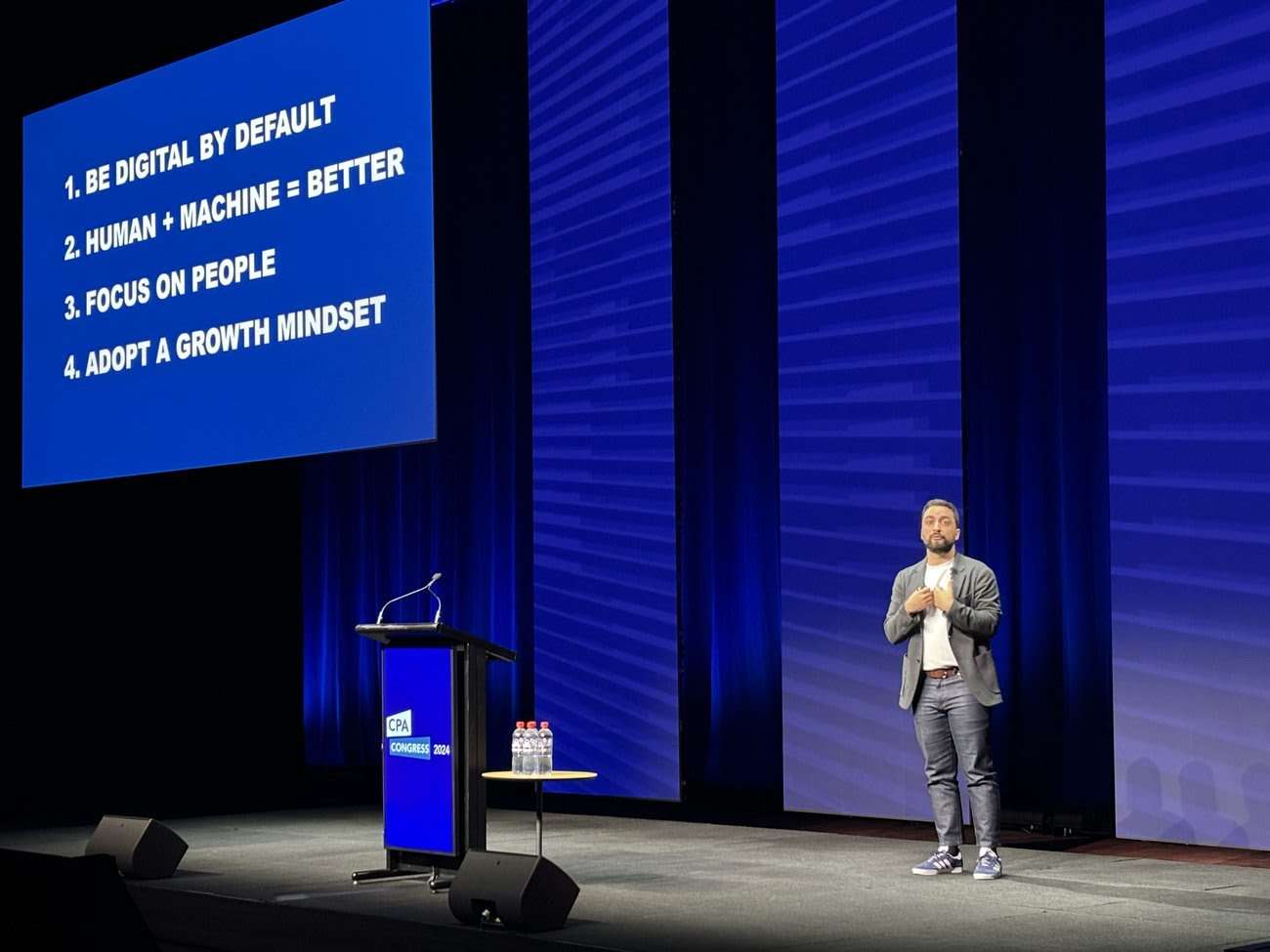11/22/2024 15:30:00 +0800
• Discover why the most effective CFOs put technology last.
• Learn how to avoid the "technology Bermuda Triangle".
• Get actionable tips to help you use technology to enhance, rather than overwhelm, your team's productivity.
Recently, I had the opportunity to speak at the AICM conference, where I caught a session titled "Human + Machine: Transforming Finance at Bluescope," led by Joao Moreira, Bluescope's Digital Finance and Innovation Lead. Joao's approach resonated deeply with me. He talked about prioritising technology in a way that might seem counterintuitive: start with the problem, prioritise the people, and then - only then - bring in the technology.
When everyone seems to be talking about AI, automation, and data analytics and the economy feels unpredictable, it's easy to feel like the answer to all our problems lies in the latest tech.
However, the most effective finance leaders know to resist the rush toward tech and instead focus first on what matters most: understanding the real issues that the tech is attempting to address and ensuring any tech choice aligns with the culture, people, and goals of the organisation.
Moreira and Bluescope have proven human sits at the heart of
successful finance transformation
The Technology Bermuda Triangle
According to
PwC's The Digital CFO report 73% of CFOs view digital transformation as a priority, but only a fraction see technology as effective in driving real outcomes.
Think of technology like the Bermuda Triangle: you can easily get lost in its depths if you aren't disciplined. We've all found ourselves at one point or another disappearing down a rabbit-hole of data, only to stop and realise that rather than inform our decisions, it's leading to paralysis.
Without being clear about the problem that the tech is supposed to solve, you could find yourself spending hours on integrations, updates, upgrades, training and data analysis that, while informative, ultimately adds little real value.
When I first started at KPMG, my "tools" were a notepad and paper. Later, laptops were introduced with productivity boosting new functionalities. Then the internet arrived, a revolutionary technology that quickly became a talking point in every office. Unlike laptops, the internet didn't transform our workflows overnight. It was still brand new. We spent so much time ensuring our laptops connected to client networks via ethernet cables and troubleshooting connection issues that it often became a distraction rather than a benefit.
The real lesson? New technology can seem like a cure-all, but without a clear role in supporting our actual work, it easily becomes a drain on time and focus.
Step 1: Start By Identifying the Issue
This is where Joao Moreira's approach is especially valuable: by emphasising problem-first thinking, CFOs can clarify the objective and identify what success looks like upfront.
After all, you can't measure success unless you know what success looks like.
Effective CFOs see technology as part of a broader strategy. They avoid adopting tools reactively based on promise alone and instead prioritise thoughtful integration, ensuring that every new tech solution has a clear purpose and aligns with the organisation's broader objectives.
A few questions can guide this decision:
• What problem will this technology solve?
• Does this technology address a specific, high-priority business need?
• Is the time and energy investment justified?
Ultimately, technology should support solutions - not dictate them.
Step 2: Engage the Team in Tech Decisions
The next step is to bring the team into the conversation. Technology's true value emerges when it enhances the productivity and experience of the people using it. Effective CFOs don't assume they know what their team needs; they ask. Listening to team members who engage with daily workflows can reveal both the pain points and opportunities that might otherwise go unnoticed.
This team-driven approach also has the benefit of fostering buy-in and accountability. When the team feels heard and sees their needs reflected in the chosen solutions, they're more likely to engage fully and make the best use of the tools available. Additionally, involving the team allows the CFO to identify any potential cultural or workflow challenges that could hinder successful adoption.
Culture, in particular, plays a critical role.
Even the most advanced technology won't deliver if it disrupts established workflows or clashes with the team's way of working. By understanding how the team operates, effective CFOs choose tools that enhance and integrate with existing processes, rather than forcing new methods that can alienate the team or lead to resistance.
Before bringing in a new solution, CFOs can evaluate questions like:
• How does this technology align with our team's culture and work style?
• Will this empower our people, or will it complicate their day-to-day work?
An effective CFO knows that technology should elevate human potential, not replace or hinder it.
Step 3: Assess Technology Options
Only once the problem and team perspectives are clear, consider which technology solution is needed.
The objective is to build a lean, purposeful tech stack that directly supports finance goals and maximises every dollar spent. Approach tech investments with focused criteria:
• Evaluate ROI Beyond Price: Look beyond cost; ensure the tool delivers measurable gains, like time savings, accuracy, or decision-making quality.
• Prioritise Simplicity and Workflow Fit: Choose tools that streamline, not complicate. Avoid systems that add steps without boosting efficiency.
• Confirm Team Usability: Assess user-friendliness, ease of integration, and training needs. Simpler tools lead to faster adoption and better ROI.
It's also important to periodically evaluate your tech stack. Phase out tools that no longer meet strategic goals to avoid tech overload.
Technology can quickly become overwhelming if boundaries aren't established. Set clear parameters for its use to ensure it serves strategic goals without becoming a distraction.
• Define a Scope of Use: Outline when and how the technology will be used to avoid unnecessary complexities. Stick to features that add value, and avoid getting caught up in every possible functionality.
• Focus on High-Impact Data: Avoid tracking every metric simply because it's possible. Prioritise data that directly informs decision-making, helping you stay focused on insights that drive outcomes.
Technology is the Servant, Not the Master
According to a study by
MIT Sloan, companies that align technology to specific, clear strategic initiatives see 50% higher effectiveness than those adopting it reactively. Technology alone doesn't deliver results; it's the strategy and people behind it that determine its real value.
Impactful CFOs know that a disciplined, problem-first approach is the key to successful digital transformation.
Technology becomes an asset only when it's deployed in alignment with the strategic goals of the business, allowing finance leaders to focus on what matters most; building sustainable, long-term value.
How might a problem-first approach to digital transformation influence your business' technology strategy?
I'd love to hear your thoughts.
P.S If your CFO is ready to lead with clarity, it's time to consider joining the CFO Boardroom before prices rise in 2025.
The CFO Boardroom is my signature program. Here, CFOs join a confidential community of peers who are ready to play bigger, drive impact, and elevate the role of the CFO over the next year. Our December intake is now open.



